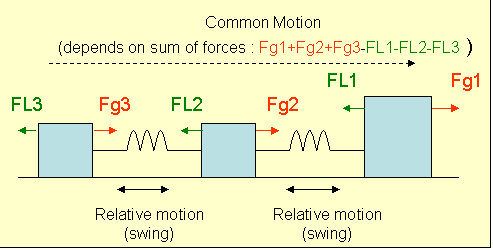
All the alternators in a power system operate "in synchronism" in steady state. The load electrical load is representative of electrical torque. At steady state the electrical torque and mechanical torque are equal. Now if the electrical torque i.e. load increases beyond limit, the mismatch between the two may result in some of the alternators going out of step.
Frequency all over a synchronous power grid is the same in steady state. Maintaining a near-constant frequency (one may allow frequency to vary over a very narrow band) is considered an important requirement of power system operation.
Frequency in a power system is intimately related to the electrical speed of synchronous generators. The difference between mechanical and electrical torques govern acceleration of a rotor of a generator. Therefore to maintain a constant speed, mechanical input and electrical output power need to be continually matched. Electrical load can vary randomly, but the total load versus time roughly follows a trend. For example, total load in a grid can vary over twenty four hours as shown in the figure on the right.
There is a distinctive peak at about 8 pm. This is the typical variation for a particular season of the year. For other seasons, the load profile is different. Also, power systems are not immune to sudden large load or generation throw-offs due to contingencies.
Frequency variation is dependent on several factors which includes the load characteristics and generator prime mover controls.
Frequency needs to be maintained near 50 Hz (nominal frequency) for the following reasons:
When there are two or more alternators present then we know that the frequency of each alternator voltage is same in steady state. But frequencies may be different in transient. But this is not the only deviation in frequency the frequency of whole system may deviate during a certain transient condition. Thus there are two types of motion to be considered when generator rotors are subject to transients :
The two modes described above can be seen as analogous as a simple spring mass system. Velocity of the whole system is analogous to the system frequency. But this is not the only mode possible as we know. There may be a motion of masses with respect to each other this represents relative motion between the generators. This is depicted in the following diagram.
